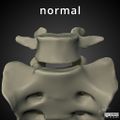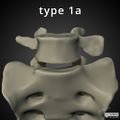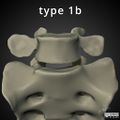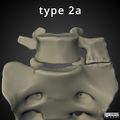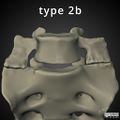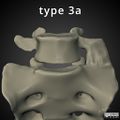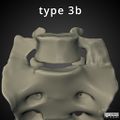Far Out Syndrome
Far-out syndrome is a radicular syndrome where there is extraforaminal compression of the L5 nerve root between the L5 transverse process and the sacral ala usually in the setting of transitional anatomy. It was first described by Wiltse et al in 1984.[1]
Aetiology
The far-out syndrome is one of the clinical manifestations of lumbosacral transitional vertebrae. Type I is where there is a hypertrophied L5 transverse process which can lead to compression. In types II and IV there is a pseudoarticulation between the L5 transverse process which can develop degenerative changes leading to extraforaminal compression. There may be an associated disc herniation.
| Type | Features |
|---|---|
| Type Ia | A unilateral TP height greater than or equal to 19 mm |
| Type Ib | Both processes heights greater than or equal to 19 mm |
| Type IIa | Presence of unilateral articulation between the TP and the sacrum |
| Type IIb | Presence of bilateral articulation between the TP and the sacrum |
| Type IIIa | Unilateral fusion of the TP and the sacrum |
| Type IIIb | Bilateral fusion of the TP and the sacrum |
| Type IV | Unilateral type II transition (articulation) with a type III (fusion) on the contralateral side |
Clinical Features
Extra-foraminal entrapment of the L5 nerve root causes radicular pain of the buttock and leg.
Diagnosis
Radiological diagnosis is difficult. Conventional MR sequences may not detect the condition. Diffuse tensor images and oblique coronal images have been used. Oblique images are taken parpendicular to the intervertebral foramen.
A selective L5 nerve root block can provide diagnostic information.
Treatment
Surgery
Minimally invasive decompressive surgery can be performed. This should include decompressing arong the pseudo-articulation, and any concomitant disc hernation.[3]
References
- ↑ Wiltse et al.. Alar transverse process impingement of the L5 spinal nerve: the far-out syndrome. Spine 1984. 9:31-41. PMID: 6719255. DOI.
- ↑ Castellvi et al.. Lumbosacral transitional vertebrae and their relationship with lumbar extradural defects. Spine 1984. 9:493-5. PMID: 6495013. DOI.
- ↑ Heo et al.. Endoscopic Treatment of Extraforaminal Entrapment of L5 Nerve Root (Far Out Syndrome) by Unilateral Biportal Endoscopic Approach: Technical Report and Preliminary Clinical Results. Neurospine 2019. 16:130-137. PMID: 30943715. DOI. Full Text.
Literature Review
- Reviews from the last 7 years: review articles, free review articles, systematic reviews, meta-analyses, NCBI Bookshelf
- Articles from all years: PubMed search, Google Scholar search.
- TRIP Database: clinical publications about evidence-based medicine.
- Other Wikis: Radiopaedia, Wikipedia Search, Wikipedia I Feel Lucky, Orthobullets,
